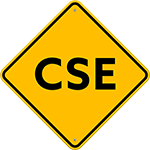7 Topics To Address At Construction Safety Meetings
Safety meetings are essential for any construction company. By discussing the various potential hazards at job sites, you can reduce the chances of nonfatal and fatal injuries.
Of course, you do not have time during safety meetings to discuss every possible danger. You should instead focus on the most common causes of accidents and how to prevent them. Here are seven topics you should emphasize during construction safety training.
1. Fall Hazards
Falls are the most common cause of death at construction sites. During safety meetings, you should discuss ways to prevent both falls from a height and falls that do not involve a change in elevation. This is particularly important for employees who frequently work on ladders or scaffolds.
2. Trip and Slip Hazards
Slips and trips are common at construction sites, as well. While these incidents are not usually fatal, they can cause painful strains and sprains. They are particularly common in icy or poorly organized areas. Be sure to talk about ways to limit falls on all types of surfaces, including stairwells.
3. Electrocution Hazards
While electrocution fatalities in the construction industry have decreased in recent years, they can still occur. In fact, most electrocution deaths at worksites still take place at construction sites. During safety meetings, be sure your workers understand proper tagout and lockout procedures. They should also understand the dangers of contacting live electrical equipment, including exposed cords and overhead powerlines.
4. Caught-Between Hazards
Construction workers can easily get pinched, crushed or squeezed between multiple objects. Caught-between hazards include potentially fatal incidents such as being buried in a trench, to relatively minor accidents such as getting a hand caught in a machine. Even the latter ordeal can still be quite painful, so you should train your workers to identify and limit potential causes of caught-between accidents.
5. Struck-by Hazards
A struck-by injury occurs when a worker is hit by a falling object or by a moving piece of equipment or vehicle. The National Institute of Occupational Safety and Health (NIOSH) reports that struck-by incidents are the second-most common cause of death and the most common cause of nonfatal injury at construction sites.
While many people face struck-by hazards at work, the risk is particularly great for those in the construction industry. According to the NIOSH, construction workers are involved in more fatal struck-by incidents than those in other industries are. Construction workers are also twice as likely to suffer a nonfatal struck-by injury.
Workers can be hit by objects that are swinging, falling, rolling or flying toward them. Each safety meeting should discuss the hazards that fit into each of these categories. You should also instruct employees to safely secure all materials, and to only operate equipment on which they have been trained.
6. Material Handling
Heavy loads and materials can cause injuries in other ways, as well. Improperly carrying, pushing or pulling large boxes can also lead to spinal injuries. Workers should learn about proper lifting strategies and ergonomics. They also should understand that it is acceptable to ask another worker for help, or to use a dolly or cart when necessary.
7. Personal Protective Equipment
Construction workers need to wear personal protective equipment (PPE) at job sites. Unfortunately, it is easy for them to forget their goggles or hard hats, especially when they are busy or in a rush. Remind them which PPE is required for certain tasks, and emphasize why this equipment is important. Workers need to understand that PPE may be their last chance to avoid injury.
Develop a Safety Culture
Holding proper safety meetings is just one part of establishing a safety culture within your construction company. The professionals at Construction Safety Experts can keep your workers safe and reduce construction hazards. Whether you need employee training, onsite safety professionals or consultations, contact Construction Safety Experts at (919) 463-0669 today.





